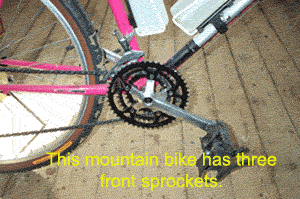Week 22 - Mechanical Advantage, Speed Ratio and Gears
4. Gears
Lesson 7
Lesson 7: Gears
The wheel and axle is another example of a simple machine. You can think of it as a modified lever. There are a number of elements that can be added to an axle. It might hold a wheel or a pulley or a gear. In this lesson we are going to examine how gears work together to perform a task. As we talk about gears it would be very helpful to review the vocabulary of gears below.
 |
A gear is a wheel with regular teeth around its rim. |
 |
A gear train is composed of two or more gears that mesh together and allow a force to be transferred from on gear to the next.
|
 The small gear connected to the motor is the driving gear. |
The driving gear is the gear that supplies the driving force. It may be connected to a motor or a crank handle or some other power source.
|
In this case the large driven gear is meshing with the small driving gear  |
The driven gear is the gear wheel to which the force is applied.
|
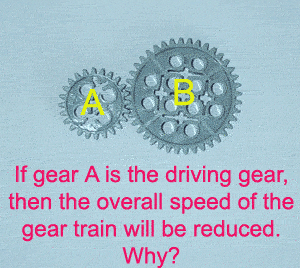 |
A set of reducing gears multiplies force but reduces the turning speed of the output axle. |
 |
A set of multiplying gears is designed to increase the speed of the output axle, but in doing so it also reduces the twisting force of that axle.
|
 |
A gear ratio is the number of teeth of the driving gear to the number of teeth of the driven gear.
|
 |
In the reducing gear transmission on the left, the speed is reduced while the turning power of the three axles are progressively increased. The gear ratios in this transmission are: motor to first axle 8/40 1st axle / 2nd axle 8/40 2nd axle / 3rd axle 8/25 |
Calculating Speed Ratio
Using the examples of the multiplying gears and reducing gears above let's calculate the speed ratio of each.

So what do these calculations
really mean?
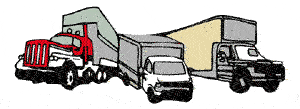 |
If we look at the first calculation it shows that multiplying gears produce a higher speed at the output of the transmission than goes in at the motor. The problem is that as the output speed goes up the the turning or twisting force is reduced. This is like trying to start a truck moving in fifth gear. As soon as the car's transmission is engaged the car's engine stalls out. There's just not enough engine power to turn the wheels against the pavement. |
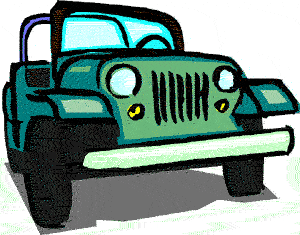
If the gears in a machine don't directly mesh together but are connected by a chain, then the gears are called sprockets . The gears on bikes are called sprockets. You are going to be using sprockets in the next activity.
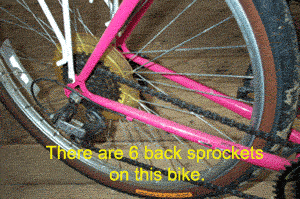 |
|
© 2002 Alberta Online Consortium
|
